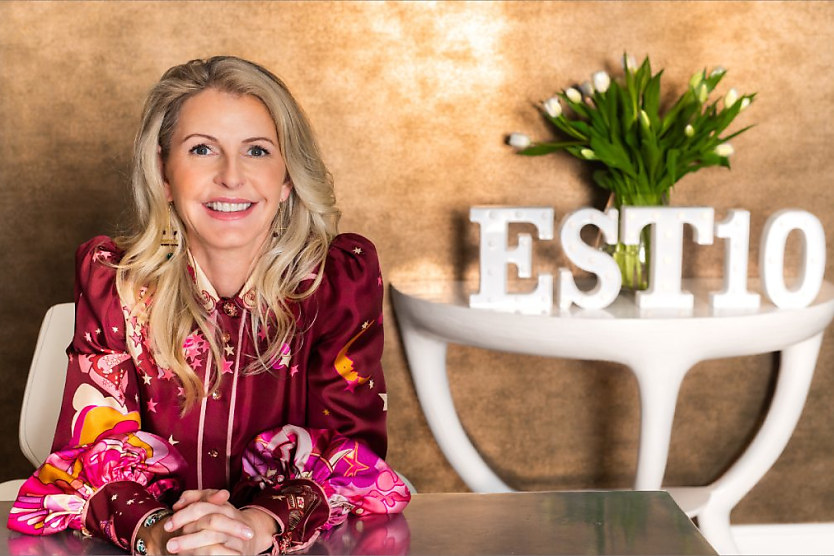
With staff retention continually proving to be a difficult task for businesses right across the Australian market, employing creative non-cash incentives could give organisations the competitive advantage needed to retain their talented employees.
HR Leader recently spoke to EST10 founder Roxanne Calder about what types of non-cash incentives resonate most with employees and how they can impact retention rates.
Calder first opened by speaking on the contested terrain that the employment market is at the moment, with retention and recruitment being a perennial concern for a vast majority of Australian businesses.
“Staff retention is a perennial concern, no matter the industry or economic climate. It is business-critical and a non-negotiable for performance. Our recent times have seen an Everest-like challenge to retain talent, leaving an enduring wound in the psyche of managers and leaders. These prized human assets are drivers for revenue, growth, and profit,” said Calder.
“Valuing these assets should not be considered exclusive to our current times. Retention isn’t just about salaries. For true sticking power, there is much more you can do. Non-cash incentives can be a potent stimulus to behaviour.”
“The art of incentivising is much more than gifting people with additional perks. To really retain your employees, immerse yourself in the complexity and sentiment of how they feel about work, career, and their newborn rights.”
Calder explained that leaders bear the responsibility of making the workplace a positive environment for their employees, and by creating a space where employees are appreciated, they will be far more likely to reside with the organisation.
“The pandemic unmasked how our employees really feel. For decades and with earnestness, the topic of leadership has been discussed. Yet the façade remained, and here we are. In our present times, the overarching reason people leave organisations is because leaders don’t care enough. For an environment where employees really stick, it starts with the manager,” said Calder.
“Strong people managers make all the difference. Skilled to spin a good day to great and to turn a bad situation around, they are an organisation’s saviour. Every employee, even the most loyal and engaged, has wobbly job moments. The adept manager, attuned to their team’s emotions and rhythms, senses the shift well before the tipping point.”
It’s a call to leaders to step up. Although there are many responsibilities, it’s essential that leaders act in their roles with care and passion for their employees.
“Our workplace requires much more from leaders. The hats are many. The latest adornment is the quasi-parental roles. With the decentralisation of the workforce, falling familial structures and further distancing of intrinsic human needs such as communication, touch etc., we look to other role models to fill the void,” said Calder.
“With care, concern, compassion and yes, it must be genuine, managers and leaders play the surrogate role.”
Flexibility and autonomy were also referenced by Calder as key instruments that can incentivise employees to reside with an organisation. With all the hoopla and debates that are surrounding return-to-office mandates, offering employees flexibility can be a huge competitive advantage.
“Flexibility in every way is sought. Hybrid is the starting point, and already it has evolved from the jejune home/office version. Hybrid is now telework, anywhere and anytime, a café, on the train, on school sports day, perhaps from home and the office. Playing hand in glove with ‘leaders who care’, if you cannot offer a hybrid, still be flexible,” said Calder.
“Leaving early, later starts, reduced hours, four-day weeks etc., to cater to life’s other priorities are just some options. Understanding people’s commitments, pressures, wants, motives, and desires in today’s fresh and rapidly evolving world has become an obligatory expectation.”
“Life’s priorities don’t just pertain to family responsibilities. The collective, across all generations and demographics, expect the freedom to do what is important to them: study, hobbies, sport, leisure, travel etc. It is our new-world reality. If your organisation can accommodate, do it.”
Finally, Calder explained that functional and practical wellbeing policies are imperative to incentivising staff. Instead of preaching lip-service-based gestures, providing understanding and action can really resonate with employees.
“I’m not referring to the superficial rallying of gestures, token offerings or unlimited perks of 2022. Taking care of employee wellbeing today requires a root cause analysis with an honest appraisal and application of the not-always-popular solution. Bin the vouchers and look for understanding and action,” said Calder.
“Non-sustainable work expectations are a major cause for people leaving their jobs. Employee resignations with prolonged empty seats have left existing employees carrying the burden. Feelings of being undervalued surface and resentment, even for those most loyal. These play on the fragility and are at the core of wellbeing.”
At the end of the day, making your employees feel seen and heard should be the bare minimum that leaders can offer their workers.
“Listen, hear, and see your employees. Work to their strengths, not weaknesses and allocate work accordingly. Quarterly reviews of work in progress allow fluid decisions of work distribution. An adaptable and supportive environment with strong communication, working with the ebbs, flows, and pressures build team confidence, and a sense of achievement. The end of the week should be an intrinsic high, not a ladened crawl to the finish line,” said Calder.
Kace O'Neill
Kace O'Neill is a Graduate Journalist for HR Leader. Kace studied Media Communications and Maori studies at the University of Otago, he has a passion for sports and storytelling.










